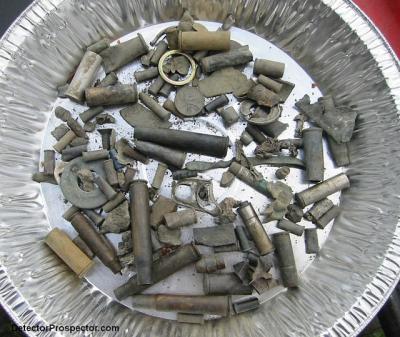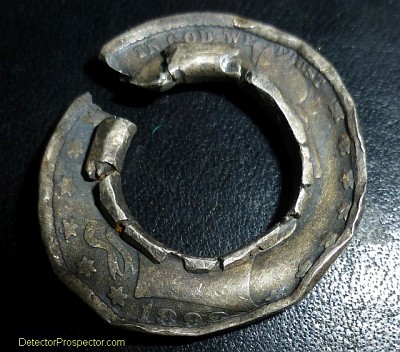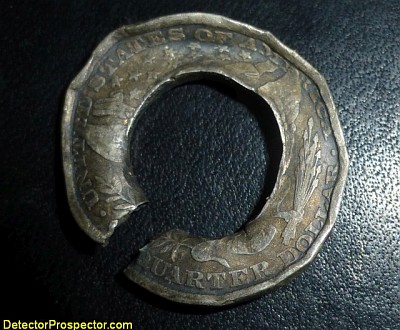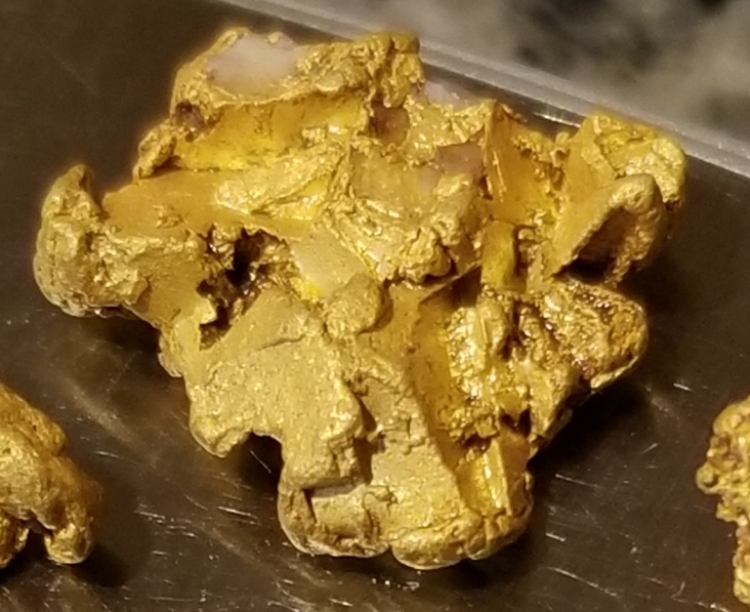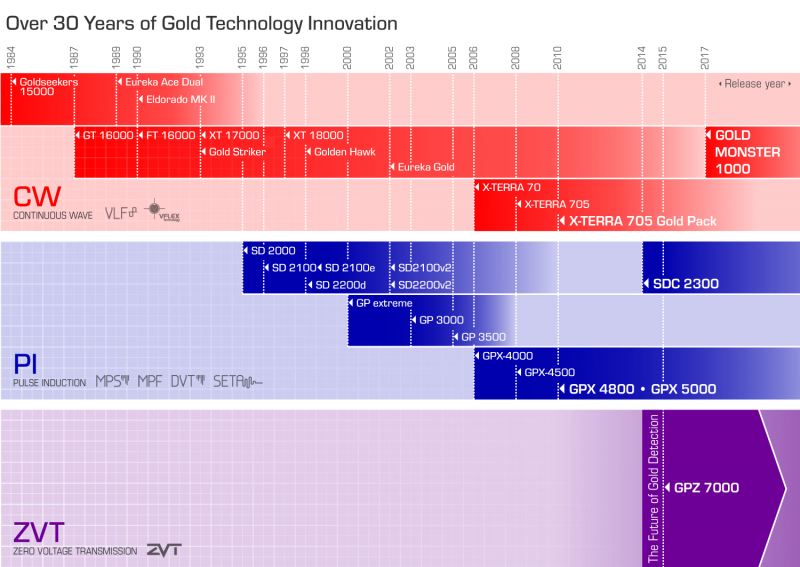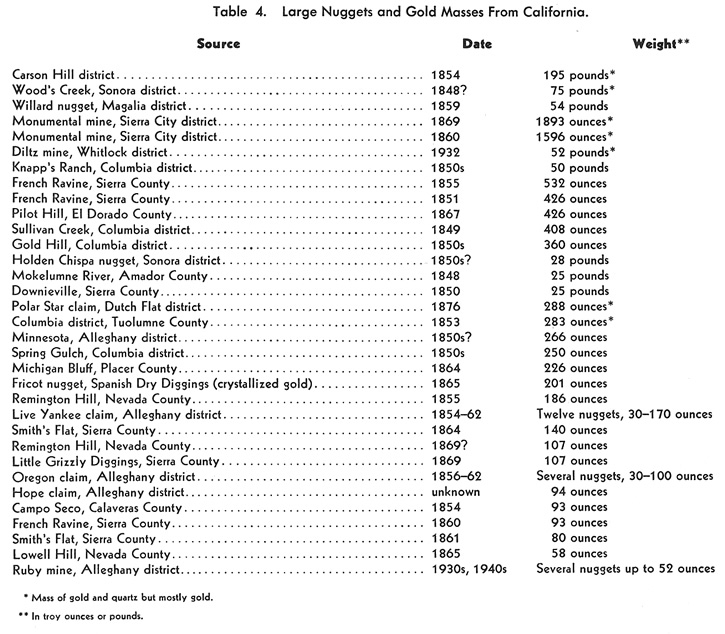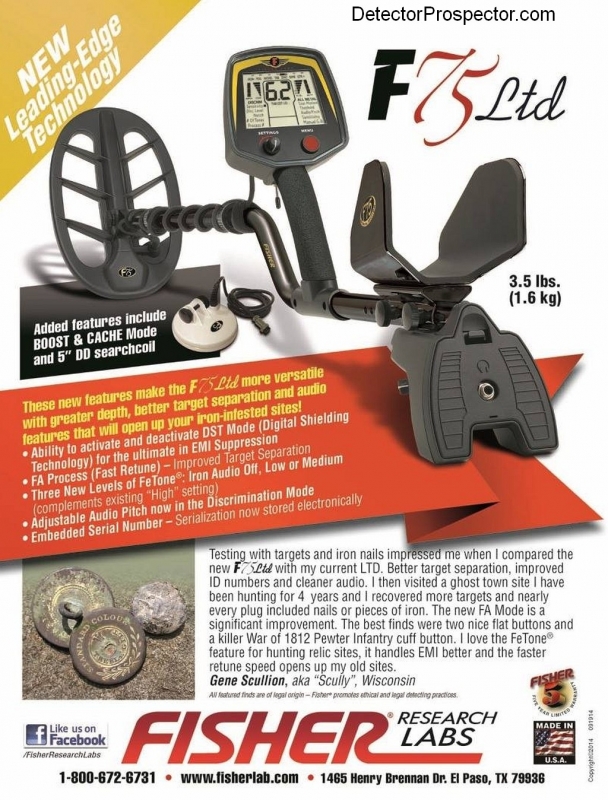-
Posts
19,829 -
Joined
-
Days Won
1
Content Type
Forums
Detector Prospector Home
Detector Database
Downloads
Everything posted by Steve Herschbach
-

Google Earth Question?
Steve Herschbach replied to tvanwho's topic in Rocks, Minerals, Gems & Geology
Don’t know on all counts Tom. Did you ever hike in and find out? -

My Equinox " Coming Out " Statement
Steve Herschbach replied to Steve Herschbach's topic in Minelab Equinox Forum
I don’t know what coils cost but you did ask previously here. I bumped it up for more attention. You are just going to have to relax Chuck. The more you work yourself up, the worse it will be. The best bet is to go metal detecting with what you have and stay busy to help the time pass. Minelab will only release info as they have it. They don’t tell me everything, and truthfully there are things they simply have not decided yet. -
I was at Ganes Creek, Alaska in 2002 on a gold nugget hunt using my White’s MXT. It was early days before they bulldozed for people and so there was a lot of non-ferrous trash found each day while looking for gold. One day I decided to take a picture of the junk from one day of detecting to show people how many holes got dug for trash. And this is only the non-ferrous. Any bolts, nuts, cans, etc. get dumped in the nearest pond throughout the day. So I take this picture and before I go to toss it in the trash a broken grommet in the upper right catches my eye. It is not a grommet at all, but an 1892 Barber Quarter with a hole shot though it! Large caliber at that, which split the coin. Any normal days I would have just dumped that stuff in the trash bin without looking at it, so my taking the photo was fortuitous indeed. This coin really is one that did almost get away! I like to imagine that it was all about. Why is there a hole shot in this coin? A bet or just somebody showing off? The edges of the coin are pounded also, prior to the coin being shot. Just a really interesting find with a White's MXT. My only Barber quarter find and it has a hole blown through it!
-
Yeah, I can appreciate people being all excited and stuff, but there is no need for all the pre-selling of machines, etc. as if only 100 Equinox will be made. There is no reason people can’t go on using what they have and wait to see what develops. Equinox is going to do just fine at the beach. Welcome to the forum!
-
It being a PI pinpointer I would not think air tests will be great. The way to test this thing will be in bad ground (which I have). It it can punch just a bit deeper than my Garrett Carrot than they have a winner. Though being a PI pinpointer another concern will be machine interference. I am not sure when they are shipping - next week or two?
-

Why So Many Big Nuggets In Oz
Steve Herschbach replied to hawkeye's topic in Rocks, Minerals, Gems & Geology
I struck it rich! With this site that has a huge number of free downloads http://earthresources.efirst.com.au/product.asp?pID=49&cID=15 http://earthresources.efirst.com.au/categories.asp?cID=42 Lots more there to explore. -

Newest Big Nugget Found..........
Steve Herschbach replied to johnedoe's topic in Detector Prospector Forum
Mike, you can download the list along with many other early Australian reports for free as part of this huge collection I found online... http://earthresources.efirst.com.au/product.asp?pID=49&cID=15 Edit - found Memoir 12 separatly online at http://docplayer.net/27532332-Geological-survey-of-victoria.html -

Newest Big Nugget Found..........
Steve Herschbach replied to johnedoe's topic in Detector Prospector Forum
Can't blame you at all Reg. As you say, the mining world is full of scams. It is the big mining company stock scams where people really get taken. A mine is a hole in the ground. The discoverer of it is a natural liar. The hole in the ground and the liar combine and issue shares and trap fools.— Detroit Free Press 1881 In Alaska back in the 80's gold rush staking and selling worthless ground was big business. It never got quite so bad this last go round, but between stock in worthless companies and sales of worthless ground worldwide many people have been fleeced for billions of dollars. The big example of course being Bre-X. A Review of Recent Mining Stock Scams ARIZONA MINING SCAMS AND UNASSAYABLE ORE PROJECTS OF THE LATE 20TH CENTURY Gold From Water (and other mining scams) (look for free download link) -
Welcome to the forum! I never had water issues with my CTX but it is one reason I sold my last one. At $2500 and with a battery seal and USB seal both to worry about, well, I just worried a little bit every time I put it in the water. I may not have had issues with the CTX, but I had two other models by other brands leak on me (both brand new!) and that is in my head, along with old CTX posts talking about leakage issues. The elimination of those two leak points is a big deal to me, combined with a lower cost machine that I will not freak out as much over if it does leak. I never travel without two detectors (very much because of those two mentioned machine failures) and so I am considering getting a Equinox 600 purely for in water use. The 800 would normally stay out of the water unless called upon to back the Equinox 600 up were it to fail for any reason. The 600 is as good as the 800 for saltwater use, and at $649 even less to worry about. And I can own both for far less than the cost of the CTX. Reports from experienced beach guys like yourself will be closely watched I am sure.
-
Same story as a week ago, I am afraid.
-

Why So Many Big Nuggets In Oz
Steve Herschbach replied to hawkeye's topic in Rocks, Minerals, Gems & Geology
I always liked geology from a young age, and once thought I might go to college for it, but instead just learned from reading it for decades. Fascinating stuff. Here is a presentation that has some good maps, etc.... https://www.smedg.org.au/Bendigo Ionex Aug07.pdf As far as "why" questions go it is always good to remember that even now most of what is presented are just theories. These guys for instance have a completely new theory as to the ultimate gold source for some Australian gold. My old geology teacher put it thus when asked a "why" question - "the conditions were favorable". Prospectors simplify even that into "gold is where you find it"! This one is not Australia but is one of my favorite recent summaries of gold deposit models: Models and Exploration Methods for Major Gold Deposit Types." Ore Deposits and Exploration Technology, Paper 48. By Robert, F., Brommecker, R., Bourne, B. T., Dobak, P. J., McEwan, C. .J., Rowe and R. R., Zhou, X. From the conclusion: "There has been significant progress in the last decade in the understanding of the geology, settings and controls of the diverse types of gold deposits, including the recognition of new deposit types in new environments. Such progress has been paralleled with the development of data integration, processing and visualization techniques, and of advances in geophysical, geochemical and spectral detection techniques. Geologists are now better equipped than ever to face the increasingly difficult challenge of finding gold. However, one of the key lessons of the last decade, as reminded by Sillitoe and Thompson (2006), is that the exploration work needs to remain grounded in geology, especially in the field, and the elaborate detection techniques and tools available will only find their full power when closely integrated with a good geological framework." Sounds like a prescription for successful nugget detecting to me! -

2 Good Days In Gold Basin
Steve Herschbach replied to Chris Ben's topic in Detector Prospector Forum
-

Minelabs Next Flagship Detector What Will It Be
Steve Herschbach replied to schiara's topic in Minelab Metal Detectors
Ha, I did not! I want that for the current GPZ, and as soon as possible!! -
Geology and Gold Mineralization of the Gold Basin-Lost Basin Mining Districts, Mohave County, Arizona By TED G. THEODORE, WILL N. BLAIR, and J. THOMAS NASH With a section on K-AR CHRONOLOGY OF MINERALIZATION AND IGNEOUS ACTIVITY By EDWIN H. McKEE and a section on IMPLICATIONS OF THE COMPOSITIONS OF LODE AND PLACER GOLD ByJ.C. ANTWEILER and W.L. CAMPBELL 1987 U.S. GEOLOGICAL SURVEY PROFESSIONAL PAPER 1361 The Lost Basin district contains a wide-ranging group of placer and lode mines in a belt lying between Hualapai Wash on the west and the Grand Wash Cliffs on the east (fig. 3). It extends from the Colorado River at the mouth of the Grand Canyon southward through the Grand Wash Cliffs for a total length of about 32 km. This district, although much larger in areal extent, has not been as active nor as productive as the adjacent Gold Basin district. The principal gold veins were discovered in 1886, and the production of the district was reported by Schrader (1909) to be "many thousand dollars," chiefly in gold. Placers apparently were first worked in 1931 and resulted in a minor local boom. However, recorded pro- duction in copper, gold, and silver during 1904-32 was valued at less than $45,000 (Hewett and others, 1936). The King Tut placers, discovered in 1931, were the most important placers in the Lost Basin district. Systematic sampling of the King Tut placers by G.E. Pitts in 1932. delineated approximately 90,000 tons of indicated reserves and 250,000 tons of probable reserves before mining operations on a relatively large scale began (Mining Journal, 1933, p. 10). All of this was confined to approximately one section of land. In the last four months of 1933 the King Tut yielded 117 oz of gold (Gerry and Miller, 1935). By 1936 the gold output from the King Tut was 450 oz, which represented the bulk of the entire pro- duction from the Lost Basin district. In 1939 Mr. Charles Duncan placered 13 oz of gold in 16 days, using only a sluice box and wash tub, near the King Tut placers (Engineering and Mining Journal, 1939), whereas the King Tut placers themselves were only worked intermittently until 1942. Eventually, placer mining of unconsolidated gravel from the upper reaches of present-day arroyos extended across approximately 25 km2 in the general area of the King Tut placers (Blacet, 1969). Nonetheless, by 1942 no additional production was recorded from the Lost Basin district. However, in the middle and late 1960's several small operators using dry washers were active intermittently in the general area of the King Tut placers. These washers were powered by small portable gasoline motors. Because of the surge in the price of gold during 1978-80, small-scale placer operations and extensive exploration efforts, centered on an area just to the north of the King Tut placers, began again. These efforts were continuing intermittently through 1986. Download The Full Report Here
-

Why So Many Big Nuggets In Oz
Steve Herschbach replied to hawkeye's topic in Rocks, Minerals, Gems & Geology
Unlike most U.S. geologic information Australia reports and publications are largely private fee access type reports. Pub,ic reports are rare. Here is a start. Victorian Gold Deposits 1998 “The Palaeozoic succession of Victoria represents a major world gold province with a total production of 2500 t of gold (i.e. 78 million oz). On a global scale, central Victoria represents one of the most gold mineralized areas outside the Witwatersrand of South Africa, and remains the prime example of a ‘slate belt’ gold province (also known as ‘turbidite-hosted’, or ‘shale-greywacke’ gold province).” Victorian Geology Geology of Victorian Gold Occurances 1908 -
A REVIEW OF GOLD MINERALIZATION IN EASTERN AUSTRALIA A. R. WILDE May 1988 The purpose of this report is to review the different styles of mineralization encountered in Eastern Australia, their distribution and genesis, particularly in the light of discoveries which have resulted from intensive exploration in recent years, and has been compiled almost entirely on the basis of literature research. Only occurrences in the states of Victoria, Queensland and New South Wales were considered. The report is arranged by state, not because this is geologically justified but because the various state geological surveys, mines departments and mining journals are prime sources of data. https://d28rz98at9flks.cloudfront.net/14266/Rec1989_030.pdf
-

Minelabs Next Flagship Detector What Will It Be
Steve Herschbach replied to schiara's topic in Minelab Metal Detectors
I have no idea what the next generation of ZVT will look like. My wish list is short... Ferrous discrimination A setting that can ground balance certain hot rocks that currently signal (like Fine Gold on a GPX) A true Salt Mode Lighter weight As far as when... this is the history so far. Click for larger version. -

Newest Big Nugget Found..........
Steve Herschbach replied to johnedoe's topic in Detector Prospector Forum
Nobody disputes Oz has produced more large nuggets than California Reg. Yes, there have been people misrepresent nugget sales. I can’t swear this is not of course as I did not see the nugget found myself. Not everything in the world is a scam however. Famous Gold Nuggets of the World by Hurley, Thomas Jefferson, 1900 -

Gold Hunting Shop In Ca?
Steve Herschbach replied to Highlandhowler's topic in Detector Prospector Forum
Please link to things instead of using secret codes. I added links to the last post. Thanks! -

Newest Big Nugget Found..........
Steve Herschbach replied to johnedoe's topic in Detector Prospector Forum
That is a May 2017 article about a find made in 2014, the Butte Nugget. It was covered on the forum. I have met the gentleman that found it. It was a legit find, and nuggets of this size were not that rare in California as to be discounted out of hand. Great nugget, but not a recent find. From Gold Districts of California, Bulletin 193 California Division of Mines and Geology 1976 -

Fisher F75+ Announced
Steve Herschbach replied to Steve Herschbach's topic in First Texas - Bounty Hunter, Fisher & Teknetics
Unless anyone can find out anything different it does appear First Texas has reissued the F75 LTD2 (with DST) as the F75+ at a lower price point. The F75 was introduced in 2007 and there have been quite a few variants in the last 10 years with the last major revision in 2014. From the Fisher Facebook page: "This is a value based promotion. You are correct it is not new technology just a great proven F75 model with lots of extras at an amazing price. We are working on new products and technology should have some of the new stuff out in 2018." Here is the "sell sheet" for the F75+ (2017/2018).... and here is the "sell sheet" for the F75 Ltd2 (2014).... -

New Detectors And Early Adopters
Steve Herschbach replied to Steve Herschbach's topic in Metal Detector Advice & Comparisons
The graph is not mine - Bryce Ryan & Neal Gross (1943) is the original source though the information and graph itself is widely used and quoted/modified in later usage. The original work is actually research into how new corn varieties are adopted by farmers. -

New Minelab Profind Pinpointers.......
Steve Herschbach replied to Redneck's topic in Minelab Equinox Forum
No, never laid hands on the new Pro-Finds. Buzzard has one.

